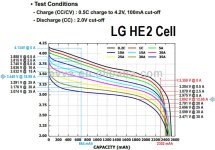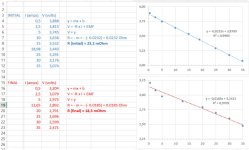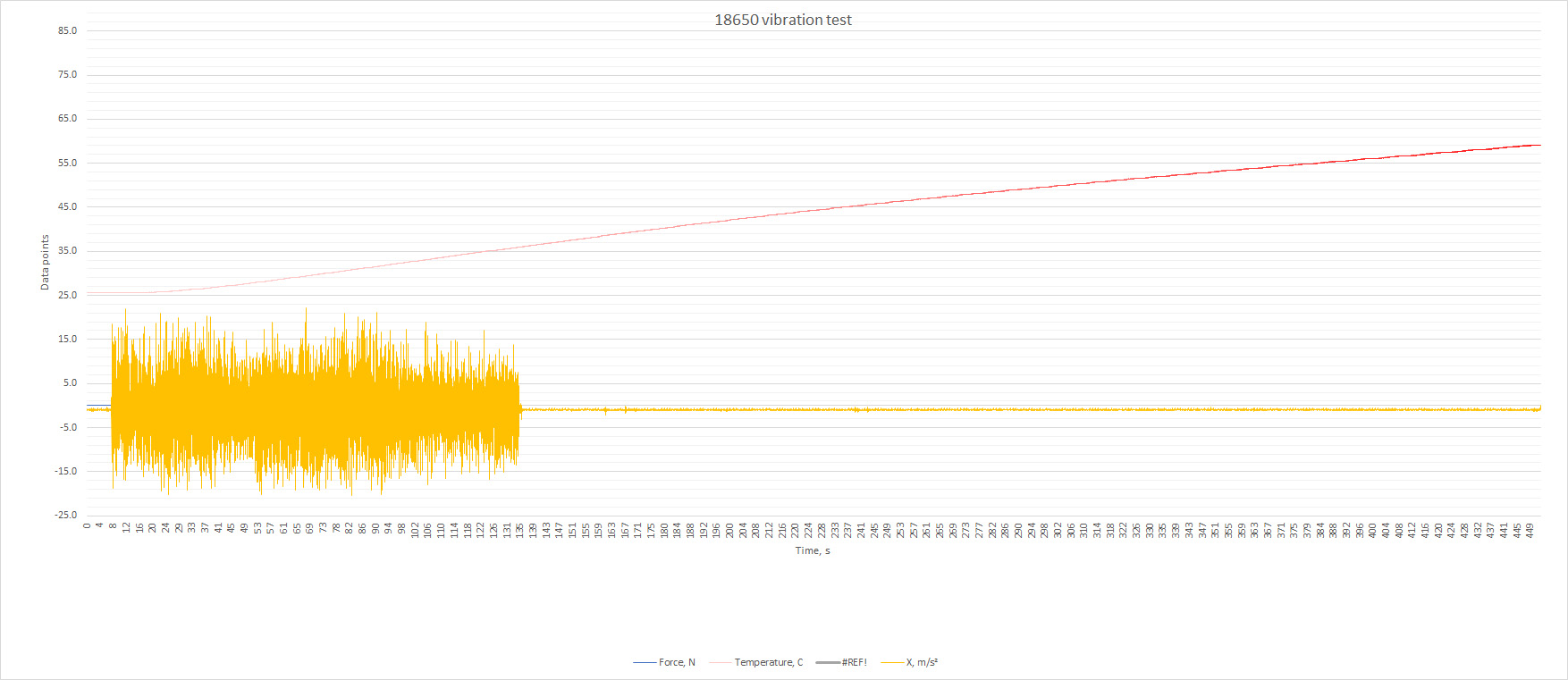agniusm said:
Wow, I could not ask for a better feedback on test results. That was quick and so detailed, I was waiting for such opinion on my initial design, 14S6P.
Thanks mate for kind techie words.
Here is a link on the cell I used and they are the ones I purchased from, legit brand cells:
https://eu.nkon.nl/rechargeable/18650-size/lg-18650he2-imr-battery.html
PDF says AC ir at 1khz is less or equal to 20mohm's
You're welcome.
Yes mostly give values in AC internal impedance rather than DC internal resistance. Easier for them since it doesnt vary as much with SOC. But for us, DCIR is much more usefull to get a grasp at potential voltage drop, current rating and heat losses.
I found a graph of the HE2.
I modified it to extrapolate values. Assuming graph is okay, and that your voltage reading are close enough to cells post, we can use it to calculate DCIR of cell and substract it to pack resistance to get the resistance of connector in NESE kit.
So INITIALLY you had : 3.440V@113.9A, which is 3.440V@18.98A per cell (since it's a 6P pack, right)
FINALLY it finished at : 2.892@75.9A, which is 2.892V@12.65A per cell.
I placed these values on this graph to extrapolate values :

From these, made calculations in Excel :
Taking Agnesium's Load range into consideration (between 0 and 20A):

Taking All possible Load range into consideration (between 0 and 35A):

So it seems that when you start the experiment at 75% SOC a LG HE2 cell should be around 23.4 mOhms_DC internal resistance. And when you finish the experiment at around 8% SOC, it should be at around 18.7 mOhms_DC internal resistance.
That is, if we assume the graph is correct, and if your voltage readings see neglectable voltage drop from wiring lenght (as if voltage readings were taken directly on battery cells posts.... still, I'm not worried about that as the cable you use look massive gauge).
So theortically, if we put 6 cells in parrallel (1/R = 1/R1 + 1/R2 + ... + 1/R6), then we get resistance of 3.9 mOhm (initally) for 6P pack and 3.1 mOhm (finally).
In practice, your pack has grossly (very crude estimate since I use one of the voltage values which is a no-load value for DCIR of pack calculations)
6.1 mOhm (between 6.1 and 6.15 mOhm).
So connectors add up just like resitors in series add up. So your connectors (2 bussbars, 2 bolts.... and neglectable resistance value of the crazy heavy gauge wire you use) in NESE kit are adding in total R = 6.1 mOhm - 3.9 =
2.2 mOhm (initially)
or R = 6.1 mOhm - 3.1 mOhm =
3.0 mOhm finally (conductors a bit high temps ?).
So a 6P NESE module adds only between 2.2 and 3.0 mOhm resistance to the resitance of the cells in parallel...
Awesome.
If I make a 14S6P pack out of these. Total pack will be 85 mOhm, and the 6P-NESE modules will acount for 31 to 42 mOhm of these 85 mOhm.
I think this is totally unforseen in solderless technology.
Even if you use supraconductors as bussbars, there will still alway be a bit of resistance due to cell not being physically welded to bussbar but rather pressed against them.
I would try slightly wetsanding my cell's contact post with 2000 grit sandpaper just to permit better cohesion between cells pressed onto bussbars. I think it would lower total resistance even more...
Again. BRAVO!
Matador.
Oh here's my DCIR calculation Excel File :
View attachment DCIR calc (matador).xlsx




